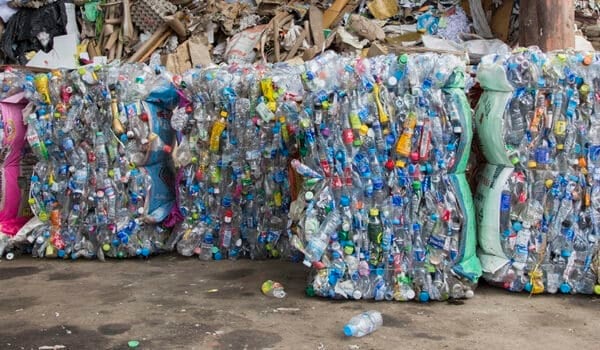Plastic production has increased twentyfold during the last 50 years, is expected to double again by 2035 – and quadruple by 2050. A lot of this plastic contains toxic chemicals and cannot be recycled into new products.
Due to mismanagement of plastic waste, about 10% of the annual production of plastics enters the environment and thus harms animals and ecosystems. In Europe, the overall recycling rate is about 30%. The rest ends up in landfills or is burnt or exported to other countries for further treatment.
Additives make plastic recycling a challenge
“Despite the importance of plastics in our everyday life, plastic waste has become the biggest manmade environmental disaster in the past decade”, says PLASTCYC project manager Golnoush Abbasi from NILU – Norwegian Institute of Air Research.
As petroleum polymeric materials, made from fossil oil, plastics are supposed to be reused, repaired and/or recycled several times before losing their original characteristics.
“Most plastics could in principle last for hundreds of years”, Abbasi says. “But the optimal recycling of plastics is hindered mainly due to: First, the presence of hazardous chemicals that are added to plastics as additives. Second, a lack of transparency and cooperation of stakeholders involved in the supply chain of plastic products.”
Understanding to what extent Norway, one of the largest waste-producing countries per capita, contributes to this global problem, is the main objective of PLASTCYC project. By using Norwegian national status-quo data on the consumption and disposal of different types of plastics, the scientists involved in PLASTCYC will map the stock and flow of plastics from use to waste in Norway. Considering various additive chemicals that are applied in different plastic types, PLASTCYC will map the flow of these chemicals from consumer products to waste. Later, those that are of concern regarding reappearance in recycled products will be identified.
Aiming for common ground
PLASTCYC aims to provide a comprehensive overview of fate of different plastic types and additive chemicals in the waste stream. The project will also provide solutions for optimizing plastic waste management by coupling scientific findings with information and knowledge of industrial partners, municipalities and waste management companies across Norway.
According to Abbasi, getting all the different stakeholders involved in the plastic supply chain on board in this project could be challenging.
“It is a very diverse group, with different viewpoints and ways of approaching the issue”, she says. “Right now, our main goal must be to find a common way to engage them all towards the solution for plastic waste reduction and application of best practices for plastic waste recycling. While the recycling of plastics must improve under the concept of Circular Economy, we have to ensure that hazardous chemicals are not unintentionally recycled and do not reappear in new recycled products.”


